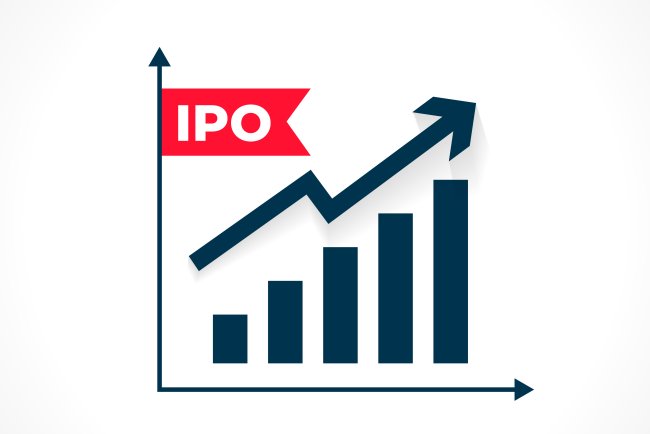Niva Bupa Health Insurance Company Limited IPO (Niva Bupa Health Insurance IPO) Details
Discover comprehensive details about the Niva Bupa Health Insurance Company Limited IPO. Learn about the IPO date, price band, subscription process, financial performance, and whether it's a good investment opportunity. Get insights into the Niva Bupa Health Insurance IPO, including its objectives, financials, valuation, and key strengths. Find out all you need to know before investing.

Niva Bupa Health Insurance Company Limited IPO (Niva Bupa Health Insurance IPO) Details
Table of Contents:
- Introduction to Niva Bupa Health Insurance
- Company Overview

- Key Strengths of Niva Bupa Health Insurance
- Niva Bupa Health Insurance IPO Details
- Objectives of the IPO
- Industry Overview and Market Potential
- Financial Performance of Niva Bupa
- Risks and Concerns
- IPO Valuation and Pricing
- Subscription Process
- How to Apply for the IPO?
- Allotment and Listing Dates
- Niva Bupa Health Insurance Business Model
- Growth Strategies of Niva Bupa
- Competitors in the Health Insurance Sector
- Should You Invest in Niva Bupa Health Insurance IPO?
- Conclusion
- FAQs
1. Introduction to Niva Bupa Health Insurance
Niva Bupa Health Insurance Company Limited, previously known as Max Bupa Health Insurance, is one of India's leading health insurance providers. With a strong emphasis on customer-centric services, the company has gained significant traction in the health insurance sector. Niva Bupa aims to make quality healthcare accessible to everyone by offering a wide range of innovative insurance products.
2. Company Overview
Founded as a joint venture between Max India Limited and Bupa, a UK-based healthcare services expert, Niva Bupa underwent a major shift when Max India exited the partnership. The new entity, Niva Bupa Health Insurance, emerged with the goal of expanding its market share through technology-driven solutions and innovative health insurance products.
Key Highlights:
- Headquarters: New Delhi, India
- Founding Year: 2010 (as Max Bupa Health Insurance)
- Core Services: Individual, family, and group health insurance plans
- Digital Initiatives: Robust online presence and mobile app for easy policy management
3. Key Strengths of Niva Bupa Health Insurance
- Comprehensive Product Range: Offers various health insurance plans catering to different demographics, including individuals, families, senior citizens, and corporate clients.
- Strong Network of Hospitals: Ties with over 7,000 network hospitals across India ensure seamless cashless treatment.
- Customer-Centric Approach: Focuses on providing personalized services, including pre- and post-hospitalization support and preventive healthcare.
- Technological Integration: Enhanced user experience through digital platforms, offering online policy issuance, claims management, and customer support.
4. Niva Bupa Health Insurance IPO Details
The much-anticipated Niva Bupa Health Insurance IPO is expected to draw significant interest from investors due to the company's established market presence and consistent growth trajectory. Here are some key details:
| IPO Particulars | Details |
|---|---|
| IPO Size | To be announced |
| Price Band | To be announced |
| Lot Size | To be announced |
| Issue Type | Book Building Issue |
| Listing Exchanges | BSE, NSE |
| Offer for Sale (OFS) | Includes a portion from promoters |
| Fresh Issue | New shares issued to raise capital |
| Face Value | ₹10 per share |
5. Objectives of the IPO
The primary objectives of the Niva Bupa Health Insurance IPO are as follows:
- Capital Infusion for Expansion: The funds will be utilized to strengthen the company's financial base, enabling expansion into new markets and enhancement of product offerings.
- Brand Visibility: Listing on the stock exchange will elevate the brand's visibility and credibility in the highly competitive health insurance industry.
- Debt Repayment: A portion of the proceeds may be used to reduce the company's existing debt, improving its financial health.
- Enhance Technological Capabilities: Investing in digital transformation to improve customer experience and operational efficiency.
6. Industry Overview and Market Potential
The health insurance industry in India has seen exponential growth, driven by increasing healthcare costs and rising awareness about the need for medical coverage. The penetration of health insurance is still relatively low, indicating vast potential for growth.
Key Trends in the Industry:
- Rising Healthcare Costs: A significant factor pushing individuals to opt for health insurance plans.
- Government Initiatives: Schemes like Ayushman Bharat are increasing insurance penetration in rural areas.
- Digital Adoption: Increasing reliance on technology for policy issuance, claims processing, and customer support.
- Growing Middle Class: As disposable incomes rise, more families are investing in health insurance policies for financial security.
7. Financial Performance of Niva Bupa
Analyzing the company's financial performance provides valuable insights into its growth trajectory and profitability. Over the past few years, Niva Bupa has showcased steady revenue growth, driven by its expanding customer base and innovative product offerings.
Key Financial Metrics (Illustrative Data):
| Year | Revenue (₹ Crores) | Net Profit (₹ Crores) | Total Assets (₹ Crores) |
|---|---|---|---|
| FY 2020 | 1,100 | 45 | 2,300 |
| FY 2021 | 1,400 | 60 | 2,800 |
| FY 2022 | 1,800 | 75 | 3,200 |
8. Risks and Concerns
While investing in an IPO, it's essential to consider potential risks:
- Regulatory Changes: The health insurance industry is heavily regulated, and changes in policies could impact profitability.
- Competition: Intense competition from established players like HDFC Ergo, ICICI Lombard, and Star Health Insurance may affect market share.
- Economic Slowdown: Economic downturns could lead to reduced spending on non-essential services, affecting premium collection.
- Operational Risks: Challenges in claims management and customer service could negatively impact the company's reputation.
9. IPO Valuation and Pricing
The valuation of Niva Bupa Health Insurance's IPO will play a crucial role in determining investor interest. The company is expected to adopt a competitive pricing strategy to attract both retail and institutional investors. The pricing will likely be based on factors such as:
- Market Conditions: Prevailing market sentiment and performance of recent IPOs.
- Financial Health: Company's revenue, profitability, and growth prospects.
- Industry Benchmarks: Comparisons with listed peers in the health insurance sector.
10. Subscription Process
The subscription process for Niva Bupa Health Insurance IPO involves various steps to ensure smooth participation from retail, institutional, and non-institutional investors.
Subscription Categories:
- Retail Individual Investors (RIIs): Reserved portion for individual investors applying for shares up to ₹2 lakhs.
- Non-Institutional Investors (NIIs): Includes high-net-worth individuals (HNIs) applying for shares above ₹2 lakhs.
- Qualified Institutional Buyers (QIBs): Large financial institutions such as mutual funds, banks, and insurance companies.
11. How to Apply for the IPO?
Investors can apply for the Niva Bupa Health Insurance IPO through online and offline methods:
Online Methods:
- Net Banking (ASBA): Most banks offer the ASBA (Application Supported by Blocked Amount) facility for IPO applications.
- Broker Platforms: Platforms like Zerodha, Upstox, and Groww provide easy access to IPO applications.
Offline Methods:
- Visiting Branch: Investors can fill out physical application forms at designated branches of banks and submit them manually.
What's Your Reaction?



















